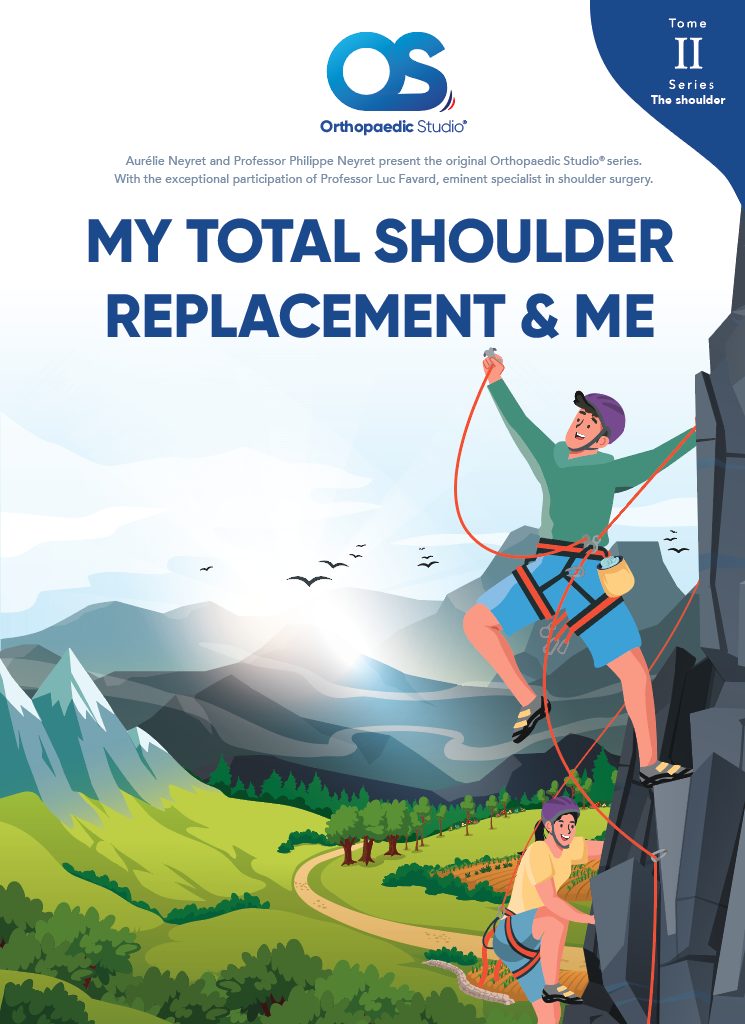
All you need to know about
Total shoulder replacement
Why should you, as a patient or future surgeon, inform yourself? It’s about you and your shoulder.
Available soon…
You are the principal actor of your surgery
You will be the only one present from the beginning to the end of the care process, from A to Z and beyond that, you’ll have to live with it. In other words, you need to be part of the project, part of the surgical team. To feel at ease within this team, it’s essential to inform you and give you the keys to communicating as well as possible with the caregivers.
What are the two different types of shoulder replacement?
An anatomical prosthesis is a prosthesis that reproduces the anatomy: on the humerus side, there is a part of a sphere equivalent to the humeral head being replaced, and on the scapula side, there is a small cup equivalent to the surface of the glenoid.
The inverted prosthesis, as its name suggests, reverses the joint surfaces. This means that the ball part will be attached to the scapula, and the cup to the humerus.
The choice of whether to implant an anatomical or an inverted prosthesis depends essentially on the condition of the tendons that attach to the head of the humerus, i.e. the rotator cuff. If the tendons are damaged, an anatomical prosthesis cannot function properly. There are also other situations in which an inverted prosthesis is preferable to an anatomical one, such as when the glenoid is worn or the head of the humerus is not centered on the glenoid.
Are the results the same with an inverted prosthesis as with an anatomical prosthesis?
The anatomical prosthesis
When the rotator cuff is intact and the conditions are right for fitting an anatomical prosthesis, we can expect an excellent result, sometimes identical to that of a normal shoulder.
The reverse prosthesis
When a reverse prosthesis has to be fitted, it’s often because part of the tendons that attach to the head of the humerus is missing. These tendons are responsible for rotational movements, and while the prosthesis will usually enable the deltoid to restore elevation, it will not always enable rotation. Moreover, because of its mechanism, it does not always enable good internal rotation to be regained, i.e. it may be difficult to regain the movement that enables the hand to be placed behind the back.
Will I forget my prosthesis?
If “forgetting” the prosthesis remains the grail, this is not the “contract” reasonably made between patient and surgeon. It depends on the joint function provided by the prosthesis, and also on the patient’s perception of it. Broadly speaking, shoulder prostheses are most effective in reducing pain, but less effective in restoring mobility. In most cases, however, this new-found mobility is sufficient to avoid discomfort in all daily activities.
Just like a dental implant, after an adaptation phase that takes a few months, there’s the tolerance phase, or “living with it”.
